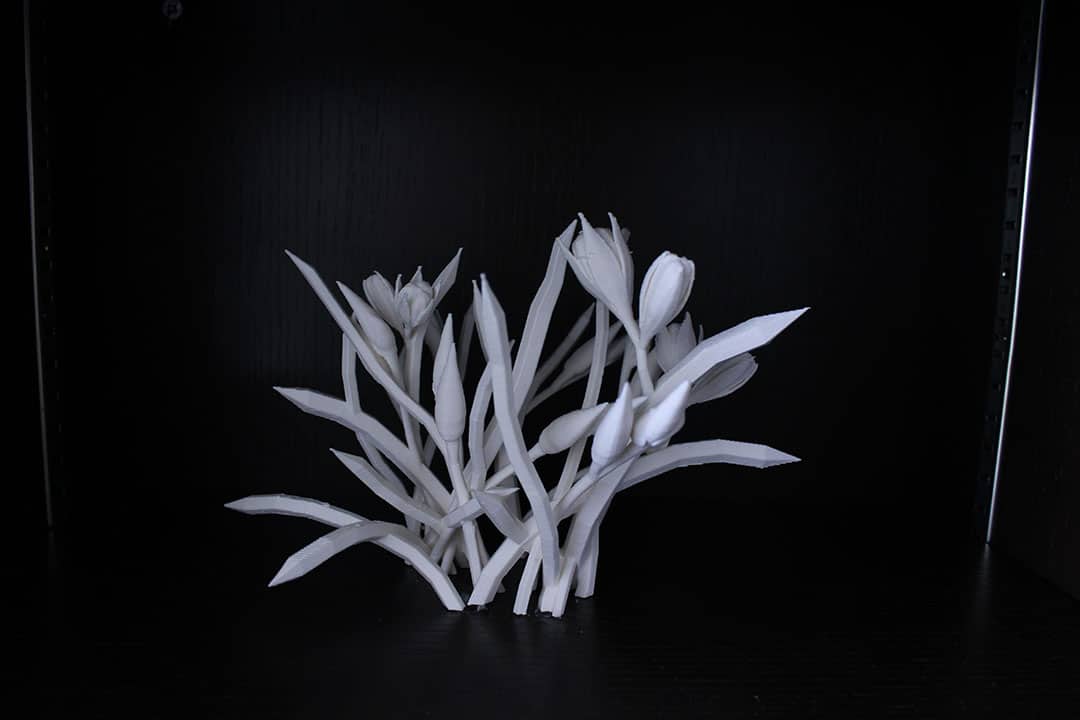Weather Amnesia is an art exhibit on the top floor of the Jackman Humanities Building currently showcasing work by modern and classical artists at the intersection of science and artistic expression. The pieces are arranged on walls and bookshelves of the 10th-floor lounge and seminar room, more decor than formal gallery.
“We are very easy to forget — to deny the abundant evidence of changing environment,” said Yuluo Wei in an interview with The Varsity. She is the curator of Weather Amnesia and a Master of Visual Studies in Curatorial Studies student at the John H. Daniels Faculty of Architecture, Landscape, and Design. Wei is critical of our modern indoor lives, especially in the urban environment, and she hopes this exhibit creates dialogue toward an awareness of our surroundings, toward noticing the weather.
In a 1922 oil painting by Graham Noble Norwell, sketches of a classical snowy Canadian landscape, ice over a lake, and a silver birch are grouped together. Around a corner hangs Lisa Hirmer’s photo series tracking the melting of snow in a test tube. Though both artists incorporate snow into their pieces, their artworks provide a stark example of the evolution of art from classical to modern times.
Another work includes a hygrothermograph, an analog measurement tool that reports temperature and humidity. A tablet with a live bird migration map is in another. A watercolour collage of a bird from a museum collection, by Florence Vale. Blocks of timber cut into a model of the Jackman Humanities Building. Abstract shapes in a big square inked in 1979, inspired by a Canadian winter.
There are two contemporary Canadian artists featured in the gallery. Lisa Hirmer has two pieces, the second being “Watching, White Ibis,” a letter to the migratory white ibis. Tania Kitchell has two pieces, one named “Weather Observations,” a diary of comments and measurements of weather by a lake. The other is Occupy, composed of 3D-printed plants that are invasive or alien to the arctic. The printed plants are not a perfect ratio to the living counterpart — for any visiting arctic plant experts.
To me, the title Weather Amnesia is a reminder; I personally don’t remember my elementary-school snow days, but my parents sometimes remark that there’s less snow falling nowadays. Kids in the 1990s must have had more snow than me, and I had more snow than the kids now. The oil painting is a quintessential Canadian snowy landscape, and older generations may relate to this more. Newcomers and youth may relate more to the six frames of melting snow. The printed plants are another guilty reminder; I barely recognize three out of the many species, save the dandelions and clovers.
But can you spot the Canadian Thistle, the Blue Eyed Grass? I think we all need this reminder lest we forget that the urban lifestyle we live is, for most of history, abnormal.
The artwork can leave viewers with important questions, but a block of wood labelled as laminated timber may not have as much face-value significance to the theme of the exhibit. The Quayside project, run by Sidewalk Labs, alongside University of Toronto’s own Goldring Centre for High Performance Sport, will both have wooden skyscrapers made of the same laminated timber, a simple but high-tech building material.
Construction of these structures is fast, less noisy, and has no harmful chemical by-products. The sculpture of the Jackman Building was first modelled on a computer, and buildings have the same process but at a bigger scale.
Weather Amnesia will run Monday–Friday from 9:00 am to 4:00 pm until June 26, 2020. It’s free and open to the public, but the seminar room space, a third of the exhibition, is sometimes booked for events.


